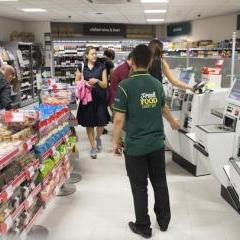Automation Is Changing The Ways Our Public Spaces Are Designed
News from the Web
On June 27, 1967, a Barclays bank in Enfield, London, debuted what is widely regarded as the first automatic teller machine, or ATM. The machine dispensed £10 at a time through the use of a special voucher that had to be purchased in advance. The system didn’t automatically deduct the amount from a customer’s balance. Instead, it functioned as a sort of steampunk check-cashing system, with customers’ balances updated by human tellers the following day.
The machine’s purpose, naturally, was to dispense cash outside of limited operating hours—as well as to fend off union efforts to close bank branches on Saturdays. At its grand unveiling, its first customer was actor Reg Varney, known for playing a hapless bus driver on a popular television comedy show. How exactly the ceremony proceeded has been lost to history, but a former Barclays employee did note decades later that Varney had been “a bit cheeky.”
The ATM is one of the most visible and familiar symbols of automation, its 24-hour service demanding neither coffee breaks nor health insurance. Two years after the first one appeared in England, a similar machine debuted at a branch of Chemical Bank (now Chase) on Long Island. Today there are more than 3 million globally, according to the ATM Industry Association. They have reshaped how people bank: anytime and anywhere, and mostly in locations that aren’t even banks.
It’s not just banks. Automation has also changed how people shop, park, fly, and more. In the process, it has reshaped the architecture that contains those experiences—making them more efficient, often, but also putting machines above people.
That first ATM was installed at the Barclays in Enfield, a borough on the northern fringes of London, specifically because it was the only branch with windows situated high enough on the building to accommodate the necessary machinery below. Since then, ATMs have required banks to reconsider other aspects of the building that house them.
A bank once provided a stately architectural procession: a vestibule, followed by a counter staffed by a waiting row of tellers, and perhaps a screened-off area with private offices and a safety deposit chamber. But enter a bank branch today—if you visit one at all—and chances are you’ll be greeted by a waiting row of ATMs. To find an actual human, you’d have to travel deeper into the building, often through another set of doors.
continue reading at theatlantic.com























